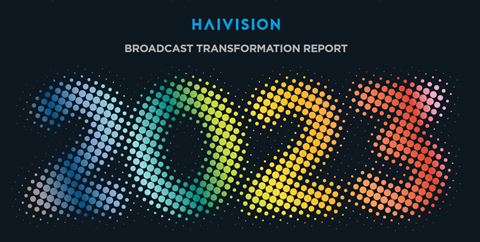Haivision report also finds cloud, 4K and HDR, and 5G among plans for tech teams

Haivision’s 2023 Broadcast Transformation Report has found that transitioning to IP and enabling remote production are the two top tech priorities for broadcasters over the next 12 months.
51% of the 720 global respondents said the two areas were their organisations’ top priorities, with moving to the cloud (38%), supporting 4K and HDR (34%), and deploying 5G (21%) coming up next.
Despite 5G being lower down the current priorities it was tipped to have the biggest impact on broadcast production in the next five years, with 63% naming it among their three technologies to make a difference. Next was 4K UHD at 45%, with AI and machine learning (43%), SMPTE ST 2110 (41%), high frame rate (24%), HDR/WCG (21%), and 8K (14%) among the other answers given.
The top benefits of 5G given when asked were greater bandwidth (53%), lower latency (51%), higher reliability (33%), and versatile broadcast contribution (33%). 20% of respondents are already using 5G, with 27% planning to use it in the next year and another 26% in the next two years.
Elsewhere, SRT continued to grow its lead over RTMP as the most used video transport protocol, moving from 63% using it to 68% while RTMP fell from 60% to 59%.
It first went top in last year’s report, which also found that hybrid workflows were a priority and 5G once again tipped to make the biggest impact.
Marcus Schioler, vice president of marketing at Haivision, said: “This year’s survey results clearly indicate that adoption of network technologies including cloud, IP, and 5G continues to evolve while on-premise operations remain absolutely critical in the broadcast industry. The data also confirms that the Haivision-pioneered SRT protocol is now the gold standard for contribution over IP networks.
“In addition, the findings highlight that broadcasters recognize the important benefits that 5G cellular networks offer for broadcast applications, a domain in which we excel with our range of mobile transmitters.”
The full paper can be downloaded here.





























No comments yet